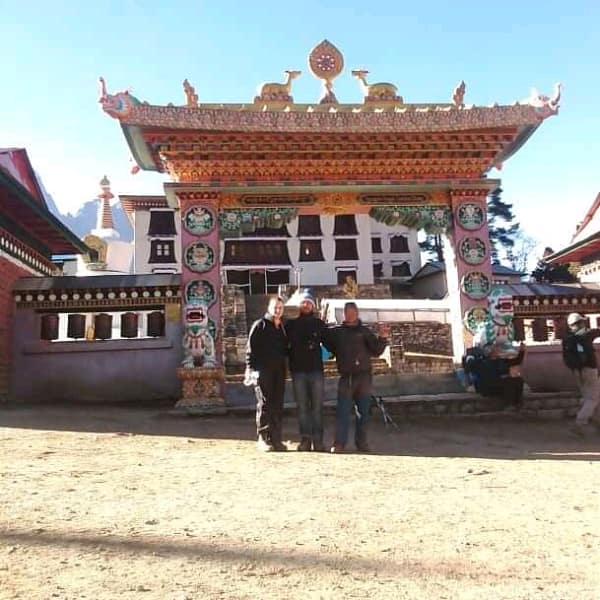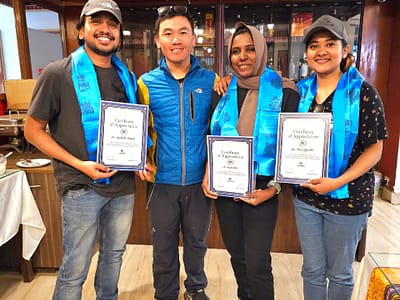Tengboche – Oldest Sherpa Village in Nepal
At an altitude of 3860 m, Tengboche Village is located in the Khumbu Region- the main route leading to the summit of Everest in the North East of Nepal. Trekkers and mountain climbing enthusiasts pass Tengboche with numerous hopes and ambitions.
The village is history, containing temples, stupas, and smaller Buddhist shrines dating back to 1880 or earlier. The Mani Wall, built of stone slabs with prayers and sacred texts, dates back to 1915. One of the two first climbers of Everest, Tenzing Norgay Sherpa, at one time lived in the village of Tengboche.
Tengboche has a permanent water supply system, a local sewerage system, and a mini-hydroelectric power station that provides the village with electricity. The village is also known for its alpine plantation of medicinal plants and Eco-center for tourism.
Many Himalayas peaks are visible here, including the highest ones: Everest, Taboche, Nuptse, Lhotse, Ama Dablam, and Thamserku.
There is a Buddhist mountain monastery in Tengboche. Here those who go up entrust their destinies to the Buddha and receive the blessings of the lamas. Here, those who go down thank the Buddha, fate, lamas, and everyone who can only be thanked for returning. In this sense, It is undoubtedly an existential place, historically and culturally significant.
Tengboche Monastery
Buddhism entered the Khumbu Valley, where Tengboche Monastery is located, about 350 years ago. The ancient Tibetan manuscripts speak of a lama named Sangwa Dorje, who possessed clairvoyance and excellent spiritual knowledge. He predicted the appearance of a monastery near the Tengboche Village – where he flew into a state of deep meditation and left a mark on the rock (you can see the imprint at the entrance to the temple).
The spiritual Guru Ngawang Tenzin Norbu, the fifth incarnation of Sangwa Dorje, founded the monastery in 1916.
Tengboche monastery
The main building of the Tengboche monastery is a Dohang – a ritual hall with a giant statue of Buddha Shakyamuni on two floors. Next are statues of the bodhisattva Manjushri (the bodhisattva of wisdom) and Maitreya (the bodhisattva who will be born among people in the future and become a Buddha, and his arrival will mark the beginning of the golden age). Another important relic of the monastery is the handwritten texts of Kanjur, the teachings of the Buddha, translated into classical Tibetan.





